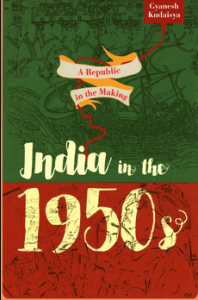Posts in the Staff category:
Marrying for a Future: Transnational Sri Lankan Tamil Marriages in the Shadow of War
SIDHARTAN MAUNAGURU. (2019). Marrying for a Future: Transnational Sri Lankan Tamil Marriages in the Shadow of War (Global South Asia). University of Washington Press
The civil war between the Sri Lankan state and Tamil militants, which ended in 2009, lasted more than three decades and led to mass migration, mainly to India, Canada, England, and continental Europe. In Marrying for a Future, Sidharthan Maunaguru argues that the social institution of marriage has emerged as a critical means of building alliances between dispersed segments of Tamil communities, allowing scattered groups to reunite across national borders. Maunaguru explores how these fragmented communities were rekindled by connections fostered by key participants in and elements of the marriage process, such as wedding photographers, marriage brokers, legal documents, and transit places.
Marrying for a Future contributes to transnational and diaspora marriage studies by looking at the temporary spaces through which migrants and refugees travel in addition to their home and host countries. It provides a new conceptual framework for studies on kinship and marriage and addresses a community that has been separated across borders as a result of war.
A Republic in the Making, India in the1950s

GYANESH KUDAISYA. (2017). A Republic in the Making, India in the1950s (1 ed.). New Delhi: Oxford University Press
This work takes a critical look at India in the 1950s, a momentous decade in its contemporary history. It looks at the colossal challenges which India faced in its years after Independence and conveys a sense of the hopes and aspirations, dilemmas and anxieties of its political leadership. It considers the key ideas, paths, and trajectories which were articulated in these years and have left an enduring imprint upon the Republic’s fabric as we know it today. The values and personalities from that decade continue to remain a frame of reference, a benchmark for public life in present-day India.
The narrative on the 1950s is woven around certain key themes: the manner in which India moved away from conditions of disorder and turmoil to deal with the ‘unfinished business’ of Partition; the cartographic reconstruction of India as a political space; the uncertain journey of its democratic institutions; the crafting of inclusive citizenship amidst the ambiguities and anxieties surrounding the minorities; and finally, the audacious project of economic self-reliance through development planning and land reforms.
Presented as a broad-brush canvas, rather than a micro-history of the 1950s, this work offers insights into how India came to be transformed in critical ways to anchor itself as a resilient, democratic polity, increasingly coming to terms with societal diversity and heterogeneity. It shall be useful to those interested in unraveling the trails and tracks of India’s exciting journey in its formative decade as a new nation.
Singapore Indian Heritage
 Singapore Indian Heritage is the Indian Heritage Centre’s first publication since the centre’s opening in 2015. It comprises essays by respected scholars and IHC’s curators on different aspects of Indian heritage, as told through the centre’s permanent galleries as well as catalogue entries featuring the centre’s collection of over 300 artefacts, photographs and documents. Edited by Professors Rajesh Rai and A Mani, the publication is an important addition to the compilation of writings on Singapore’s Indian community, and in particular on the community’s cultural heritage.
Singapore Indian Heritage is the Indian Heritage Centre’s first publication since the centre’s opening in 2015. It comprises essays by respected scholars and IHC’s curators on different aspects of Indian heritage, as told through the centre’s permanent galleries as well as catalogue entries featuring the centre’s collection of over 300 artefacts, photographs and documents. Edited by Professors Rajesh Rai and A Mani, the publication is an important addition to the compilation of writings on Singapore’s Indian community, and in particular on the community’s cultural heritage.
Nation at Play: A History of Sport in India
Ronojoy Sen, Columbia University Press, 2015
Sen follows the transformation of sport from an elite, kingly pastime to a national obsession tied to colonialism, nationalism, and free market liberalization. He pays special attention to two modern phenomena: the dominance of cricket in the Indian consciousness and the chronic failure of a billion-strong nation to compete successfully in international sporting competitions, such as the Olympics. Innovatively incorporating examples from popular media and other unconventional sources, Sen not only captures the political nature of sport in India but also reveals the patterns of patronage, clientage, and institutionalization that have bound this diverse nation together for centuries.


